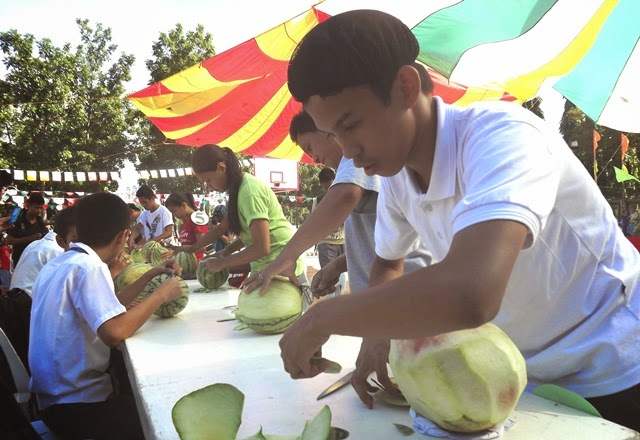 |
Carabaos
or Water Buffalos will be Iloilo’s pride on May 2 (Saturday), when Pavianhons
celebrate what is touted as the Oldest Existing Festival in Iloilo Province. It
is a traditional Ilonggo summer celebration. It is considered to be the most
celebrated and longest-running of its kind in whole Western Visayas Region.
 |
| photo by Bombette G. Marin |
The
festival, now on its 43rd year will begin with the Carabao-Carroza Parade at 7
a.m. in Barangay Ungka-I till Pavia National High School grandstand. With 18
barangay entries expected to make their way through the streets of the
provinces’ Agro-Industrial town. The parade will last between 60 and 90 minutes
and is expected to attract a lot of local and international spectators.
 |
| photo by Bombette G. Marin |
Carabao-Carroza
Parade organizers and Municipal and Barangay officials will be joining the
parade. A sled made of bamboo decorated with local produce and drawn by a
carabao. Owners brush them skin until they are sleek and shiny. Then the
carabaos are decorated or painted and attached to the carrozas. Carrozas are
then used by their respected muses competing for the annual Carabao-Carroza
Festival Queen. Parade participants will compete for the top award, the Most
Gaily Decorated Carabao and Carroza.
 |
| photo by Bombette G. Marin |
The
original event dates back in 1973 when the municipal government gave honor to
the little helper that plow their ricefields, the carabao. Farmers acknowledges the carabao’s strength
as it pulls, plows, harrows and carts with loads of several tons that is why
farmers see carabaos as faithful partners in their lives and have been
considered as part of their family.
The
typical Pavianhon lifestyle, many live in the farm. They work hard in the farm
to provide the basic needs of their family. The carabao is also their source of
transportation. Carabaos are a huge help for them. Years past, the organizers
decided to expand the celebration into a full-scale event to promote their
town.
After
the parade, the carabaos compete in a friendly 100-meterrace with and without
their carrozas. However due to some construction projects being presently done
within the school premises, the race this year will be in an 80-meter distance.
Pavia
is 9.6 kilometers north of Iloilo City. Though known to be one of the smallest
municipalities in the province with an area of only about 2,703 hectares, it is
tagged as the Agr-Industrial Center of the Region. Politically subdivided into 18 barangays, the
municipality is bordered by the municipalities of Oton, San Miguel, Sta. Barbara,
Leganes and Iloilo City. For more information, please contact, Mrs. Susan
Jovero – Municipal Tourism Officer at 09173009041.



.jpg)













.jpg)








